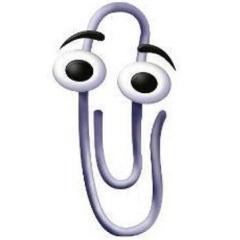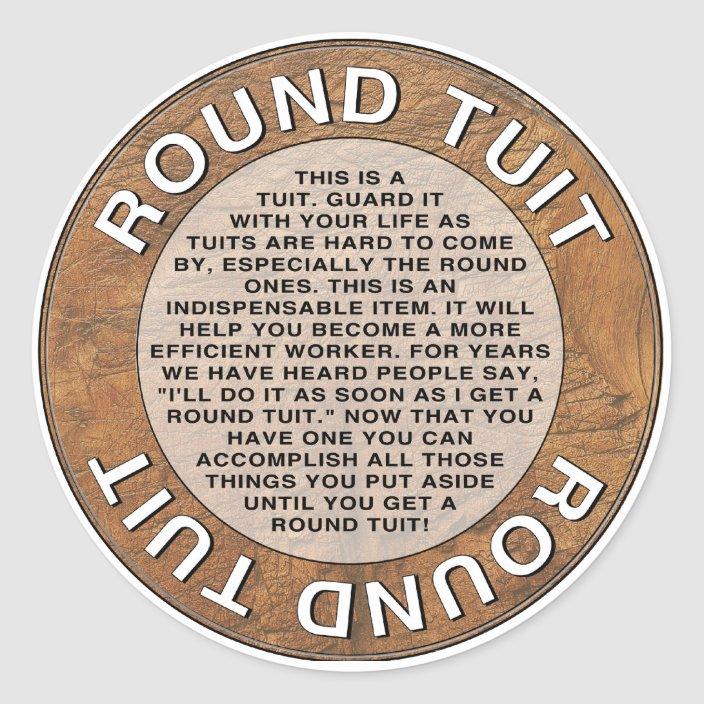-
Posts
1,932 -
Joined
-
Last visited
Content Type
Profiles
Forums
Events
Blogs
Gallery
Everything posted by billybopp
-

Singer 133k - Need some parts and answers
billybopp replied to threadfish's topic in Leather Sewing Machines
That is indeed sad news. -
When I was in HS, I took up photography did lots of pics for the yearbook of sporting events, dances and such. I picked up a book on the subject and I think it summed up tools pretty well. Better cameras do not make a better photographer, they just make getting the photograph that you want easier. - Bill
-
Yes you can. It's a bit fiddly and takes some practice, but certainly do-able. Many kinds of knives can be used, some use a round-knife, but they do make specialty skiving knives which aren't terribly expensive - anywhere from < $10 for a Japanese style knife on ebay to better ones at $35 for very good ones from Lisa Sorrell (a sponsor here), to $100 for really pretty ones from the likes of Vergez Blanchard and Chartermade. The big key is making sure they are VERY sharp, and work on a smooth hard surface! There are also "safety skivers" from Osborne and others with replaceable blades, but many find these particularly fiddly to use. There are a number of videos available on the subject, and the following is a reasonably good one. - Bill
-
I'm still making my list and checking it twice. Have some ideas in mind, but haven't really started on them yet!
-
I've been eyeing these up for awhile, and waited for airbrush reviews on them. The reviews have been starting to come out lately. It looks like some of the airbrushes included will flow air continuously and need to be turned off at the power switch when you don't want air, others only kick on when you start the air from the airbrush. For the ones that do not flow continuously, it will use less battery. Some of them can work with just about any airbrush, but may need an adapter to do so, and you may need to move adapters around to get it to work. Unless your airbrush has built-in air flow control, you get whatever the compressor puts out. They seem to move air at about 20-25 PSI, and not a large volume - that may not be enough to cover larger areas, but general consensus seems to be that they do work! - Bill
-

When to buy first leather sewing machine
billybopp replied to WannaBe's topic in Leather Sewing Machines
I'd have to agree, that IS the single most important factor to consider! - Bill -

Good Bag making book/patterns
billybopp replied to Aresioh's topic in Satchels, Luggage and Briefcases
LOL! Yes! Pretty much everybody that has made anything has faced that dilemma. Whether it be an expensive piece of leather for us, some expensive wood for a woodworker, expensive canvas and paint for a painter: Getting started is often half the challenge! I've even gone so far as to have a piece of wood in a vice, saw in-hand, just to suddenly be overcome by doubt and stop for a week or two! But eventually I got to it and everything came out fine. Maybe this will help you along ..... Here's a Round Tuit for you . - Bill -
My bet is that it's a dye transfer of some sort - either such as @maxdaddy or @Dwight suggested. If you look closely at the picture, there are a few places, particularly on the right side lighter leather strap, where the image drops out ledger lines, and a place or two where it's a bit blotchy. Laser would not do that (but it would be a great way to do this if you have one!). i have not tried the inkjet on waxed paper method, but have used a laser printer with some success. The way I did a laser printer was to reverse the image then print it, but stop the printer before the paper goes through the heated rollers so that the image does not get set on the paper. Be careful, it is very easily smudged at this point. Lay it onto the leather carefully: Do not reposition it. In my case, I used acetone to cause the toner to set onto the leather, but you could also use heat as in @maxdaddy's post. Acetone does discolor the leather some, but in my case that was not a problem. The "beard pullers" in the picture below were done this way, and also partially outlined with a swivel knife. - Bill
-
Look for Low VOC dye or Acrylic dye. - Bill
-
You may want to check out Prince Armory and his YouTube channel. There are patterns to be found on the website, and video tutorials on YouTube. Most of his work is pretty fancy, but there is no reason why you can't use that as a jumping off point for what you want to make if armor strikes your fancy! - Bill
-
I'm certainly no holster expert, but I do know that just about the last thing you want to have happen is for that expensive pistol to come loose (even in its holster) and hit the floor! I'd make it perfectly clear to the client that it is an experimental kind of thing that they have requested, and agree to NO liability as a condition (I'd get that in writing as well)! It may work well, but even so you don't want to be on the hook if for any reason it does not after it's out your door! - Bill
-

I'm confused about the purpose of some of these products
billybopp replied to Chris623's topic in Getting Started
You will know when your awl is sharp enough when you are able to reasonably easily go through several layers of thick leather and into your finger without you even feeling it! - Bill -
Yup! That is a really nice workspace, but it's far too neat and clean! I suspect you cleaned it up to show us. - Bill
-
Some dyes will do that. Pigment floats to the surface as it dries and needs to be rubbed off. I was not aware that black dye would do that! But now I know. Thanks. It does make sense, though. The reason it looked red is that there really are no true blacks in inks and dyes other then squid ink. Everything else is a very dark version of other colors, usually red, blue or green. I helped a friend of the family do a science fair project when he was in high school in which he tool different brands of ballpoint pens, made a mark on some blotter paper and diluted it with alcohol which then spread it out on the blotter paper so that you could see what the true color was! He won the science fair. - Bill
-
In normal times, it is prudent to wait for beer o'clock .. .and it's always beer o'clock somewhere. But in 2020, it's pretty much beer o'clock everywhere all the time! And thanks for posting the pics and info! I love seeing folks make their own tools!! - Bill
-
Just a note to add to what @zuludog said. If you are not comfortable with sharpening an awl blade, Leatherwranglers offers sharpened Osborne blades (for additional $, of course)! https://leatherwranglers.com/shop/ols/products/awl-blades - Bill
-

Painting and staining the same piece of leather
billybopp replied to Aspikes18's topic in How Do I Do That?
One alternative to brushing on dye is to airbrush. In your case, however, I'd dye first by dipping, or whatever you want to use and then paint over the dye! Acrylic leather paint will generally work just fine over dye. - Bill -

1760 - 1780 North Carolina - leather research
billybopp replied to Simeon54's topic in Historical Reenactment
I believe I would consider contacting the folks at Colonial Williamsburg. They specialize in that era, have leatherworking apprenticeship programs, and are noted for their research on the era. It's a good bet that if you can get in contact with their research folks there they will be happy to provide any information that they can for you. I do not know if your setting is more frontier or more East Coast city. They type of leather work would likely be a bit different for each, but again it's worth a try to contact them. https://www.colonialwilliamsburg.org/ -Bill -

Fiebings Pro Dye vs Feibings Leather Dye
billybopp replied to ewayne53's topic in Leatherwork Conversation
Exactly! Pro dye colors are "synthetic", and often petrol based (hence Fiebings old name for these of Oil Dye) - Think Prussian Blue, for example. As @Mattsbaggersays, there tends to be less rub-off with pro dye, and in most cases the colors are more vibrant. - Bill -
Looks great! I love the simple yet elegant look. I have tried something similar in the past, but just as an experiment really. I used a geometric craftaid from Tandy, which gives a similar effect, but hard to NOT get lines where you don't want them with it. If you could figure out how to do that, it would make quick work of such a pattern. https://tandyleather.com/collections/books-patterns/products/geometric-stampinggrid-craftaid-14-38-12 - Bill
-
Powered skivers are fairly pricey, but pull skivers are more affordable, but limited to 3-4" width. That should be plenty for all but the biggest sheaths. We're still talking about a couple hundred $, but far less than the thousand $ for a power skiver. You can also skive by hand using a safety skiver, but that takes a lot of skill and practice. - Bill
-
After spraying dye, I run some isopropyl alcohol through my airbrushes. If I won't be using it again, it gets disassembled and cleaned in a cheap ultrasonic cleaner that I had lying around. - Bill
-
Nice find! That likely means it's been in your family for a long time! As @deetralala says, electrolysis is a good way to remove rust. There is a commercial product called Evaporust that works well too. For the brass parts, I'd give them a good clean to remove any dirt and then I'd try Tarn-X to shine them up. Brasso and such are mild abrasives, Tarn-x works chemically and should remove far less metal! Almost certainly somebody here will recognize that logo. I think I remember somebody identifying one like it a couple of years ago, but I'm not that good! - Bill
-
I've been using @Dwight's recipe for some time now, and love it. If I want it a little softer, I put in a little more NFO, and if I want it a little firmer I put in a little more wax. I also add just a few drops of Eucalyptus or Tea Tree Oil just for the scent. Most of the time, I pour it into foil cupcake cups to let it cool into a cake. Other times, I pour into "lipstick" containers that I got from eBay, and give a tube away with the things I make. - Bill



